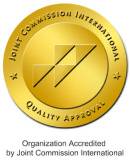
People who frequently use their wrists for work may occasionally feel pain in that area. If left untreated and the wrist continues to be overused, it may develop into a common condition known as tennis elbow. In severe cases, it can lead to wrist weakness making it difficult to even lift a cup of water and may cause intense pain even when the wrist is at rest.
Causes of Tennis Elbow
The pain associated with tennis elbow primarily occurs at the lateral epicondyle of the humerus, which is the origin point for the muscles responsible for extending and lifting the wrist and hand. Repetitive movements can lead to overuse of this area, and the accumulated stress on the outer tendons may result in inflammation.
Who Is Most Prone to Tennis Elbow?
Tennis elbow is most commonly seen in individuals aged 35 to 50, especially homemakers and those whose work involves frequent wrist movements. These repetitive motions make them more susceptible to this type of strain injury. Without proper rest and intervention, the pain may extend to the forearm muscles and fingers, and over time, it can limit elbow mobility and negatively impact quality of life.
Symptoms of Tennis Elbow
The symptoms of tennis elbow typically begin as mild discomfort and gradually worsen, especially during activities involving the forearm or wrist. Common symptoms include:
- Pain on the outer elbow: The most characteristic symptom is a dull or sharp pain on the outer side of the elbow (lateral epicondyle of the humerus), which becomes particularly sensitive to touch or pressure.
- Weakened grip strength: Due to damage to the forearm tendons, patients may struggle to hold objects firmly. Even lifting a cup or mobile phone can feel difficult.
- Increased pain during lifting or extension: Actions such as lifting heavy items, opening doors, wringing towels, typing, or using a mouse can significantly worsen the pain.
- Morning stiffness and discomfort: Upon waking, the forearm or wrist may feel stiff, though the discomfort often eases slightly after movement.
- Limitations in daily activities: Even simple tasks like brushing teeth or combing hair may trigger discomfort or pain.
Treatment Options for Tennis Elbow
Accurate diagnosis is crucial for treating tennis elbow, as it is similar to another common condition, "golfer's elbow." However, tennis elbow primarily affects the outer side of the elbow and is associated with frequent wrist extension and backward twisting motions. Additionally, understanding the patient's pain level and frequency is essential, often assessed using the Visual Analogue Scale (VAS), where 0 represents minimal pain and 10 indicates unbearable pain.
The vast majority of cases can be managed with conservative treatments, including taking anti-inflammatory painkillers. If necessary, patients may need to wear an elbow brace or support to relieve muscle tension. Furthermore, physical therapy can aid in early recovery. Simple stretching exercises can strengthen forearm and wrist muscles, such as grip training with a stress ball, lifting dumbbells to enhance wrist strength, and stretching movements. These can improve endurance and help prevent recurrence.
There are various treatment options for tennis elbow, each with different effectiveness and side effects. Patients with questions should consult their attending physician to choose a treatment plan suitable for their condition.
Why Is Tennis Elbow Difficult to Heal and Prone to Recurrence?
This is mainly related to the structural characteristics of tendons, usage habits, and improper treatment. Tennis elbow involves the tendon tissues at the lateral epicondyle of the humerus, which have limited blood supply and therefore heal slowly. Once overused and subjected to microtears, even if symptoms temporarily subside, incomplete healing makes it easy for inflammation to recur through repetitive daily movements.
Additionally, many patients resume repetitive activities—such as lifting heavy objects, typing, or using tools—too soon after slight symptom relief, which worsens the condition before full recovery. Failing to correct improper force application or poor working posture also leads to superficial treatment without addressing the root cause, resulting in persistent issues. Some patients rely on painkillers or short-term treatments while neglecting rehabilitation exercises, muscle strengthening, and stretching. This continued pressure on the tendon structure makes long-term improvement difficult.
Therefore, to effectively prevent recurrence of tennis elbow, it is essential not only to control inflammation but also to fundamentally improve lifestyle habits and muscle usage patterns. Physical therapy should be incorporated to enhance the stability and endurance of the forearm muscles.
Is the Treatment Precise? Common Pitfalls in Managing Tennis Elbow
Many patients facing tennis elbow tend to fall into the misconception that "pain relief equals recovery," which often leads to recurring symptoms and prolonged discomfort. In reality, tennis elbow is a chronic tendon overuse condition. If treatment methods are inappropriate or prematurely discontinued, inflammation may persist—or even worsen.
1. Relying Solely on Painkillers or Corticosteroid Injections
While pain medications and corticosteroid injections may offer temporary relief, they do not repair the damaged tendon tissue. Nor do they address underlying causes such as overuse or improper biomechanics.
2. Overlooking the Root Cause (e.g. Work Habits and Posture)
Failing to correct repetitive daily movements, improper tool usage, or incorrect force application prevents the affected tendons from resting and recovering, prolonging the injury.
3. Lack of Physical Therapy and Muscle Conditioning
Physical therapy not only helps reduce inflammation but, more importantly, uses stretching and strengthening of the forearm muscles to relieve stress on the tendons. Without proper rehabilitation training, even temporary recovery is highly prone to relapse.
4. Resuming Activity Too Soon
Returning to sports or physical labor as soon as symptoms ease can increase tendon strain and lead to recurring issues. Effective treatment of tennis elbow requires a dual approach targeting both inflammation and tendon overuse. Combining physical therapy, lifestyle adjustments, and gradual strengthening of muscle support is essential for true recovery and minimizing the risk of relapse.
Prevention Methods for Tennis Elbow
1. Avoid Overusing Wrist and Forearm Muscles
Refrain from prolonged repetitive actions such as typing, lifting heavy objects, or continuous mouse usage. During work, take a break every 30 minutes to allow your muscles to relax.
2. Maintain Proper Posture and Force Application
Whether during exercise or work, it's important to use appropriate tools—such as a well-balanced spatula or a mouse that fits the hand—and ensure that force is evenly distributed between the wrist and arm to avoid overstraining any single area.
3. Strengthen Forearm Muscles
Engage in stretching and strengthening exercises targeting the forearm extensor group—such as grip ball training or resistance band workouts—to help reduce tendon strain.
4. Stretching and Warming Up Are a Must
Before engaging in any activity that requires forearm strength, it's important to properly warm up and stretch to lower the risk of tendon injuries.
5. Use Elbow Braces or Support Straps
Wearing an elbow brace during work or exercise can help distribute stress on the tendons and provide extra support, which may prevent early discomfort from developing into chronic inflammation.
6. Watch for Early Symptoms and Act Promptly
If you experience early symptoms like outer elbow pain or difficulty lifting objects, rest immediately and seek professional advice to prevent worsening. Through daily care and good usage habits, even those who frequently use their arms can effectively prevent the onset or recurrence of tennis elbow.
FAQ
Does Tennis Elbow Only Affect Tennis Players?
No. Although named after tennis, most patients are not athletes but rather individuals engaged in repetitive wrist and forearm activities, such as typing, cooking, hairdressing, or lifting.
What’s the Difference Between Tennis Elbow and Golfer’s Elbow?
Tennis elbow causes pain on the outer side of the elbow (lateral epicondyle), while golfer’s elbow affects the inner side (medial epicondyle). Both result from tendon overuse but involve different muscle groups.
Will tennis elbow heal on its own?
Mild cases may improve naturally over time, but if left untreated or if the muscles continue to be overused, it can lead to chronic inflammation, delayed recovery, or even worsening of the condition.
Is surgery necessary?
In most cases, surgery is not required. Conservative treatments such as physical therapy, rest, ice application, and oral anti-inflammatory medication are usually effective. Minimally invasive surgery is only considered if these treatments fail after more than six months.
Can I exercise or do weight training?
During the acute inflammation phase, it's important to avoid overusing the forearm. In the mid-recovery stage, targeted exercises such as grip ball training and resistance band workouts can be done under the guidance of a physical therapist to help rebuild tendon strength.
















